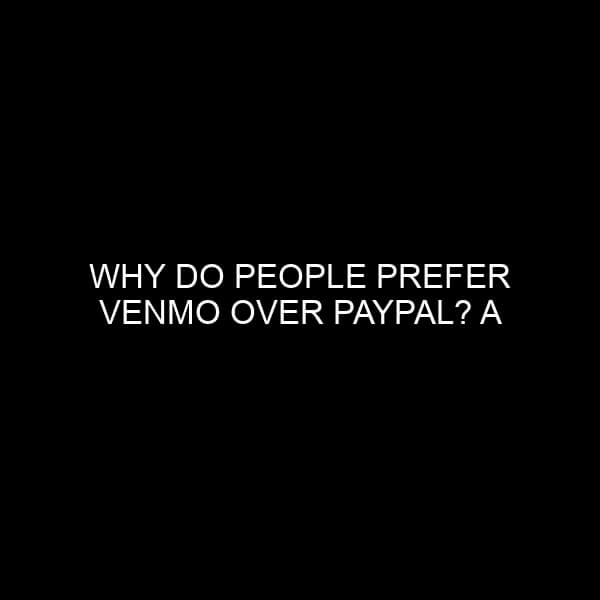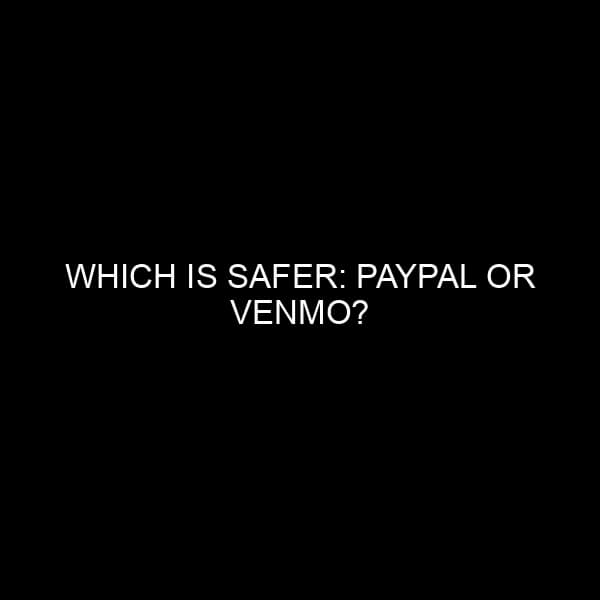How Much Does Venmo Charge for $1? A Comprehensive Look
In today’s rapidly evolving digital economy, peer-to-peer payment systems have become a staple for personal and professional transactions. Venmo, a product of PayPal, Inc., is among the frontrunners in this domain. As someone with a solid background in the financial market and banking industry, I’m well-aware of the nuances behind fees and charges associated with such platforms. It’s essential for users to understand how these systems work and what costs might be incurred, especially when transacting small amounts like $1.
Understanding Venmo’s Fee Structure
Venmo, at its core, is a free service for sending and receiving money among friends. Whether you’re splitting a lunch bill or sharing rent, the platform makes the process seamless. However, as with all services, certain scenarios invoke fees.
1. Personal Transactions: The Base Use Case
For standard peer-to-peer transactions using a linked bank account, a debit card, or your Venmo balance, there are no fees. So, if you’re sending or receiving $1 from a friend for a personal reason, you won’t be charged any fees, and the recipient will get the full amount.
2. Credit Card Transactions: A Different Story
When you use a credit card to fund your transactions on Venmo, there’s a 3% fee applied. This charge is primarily to cover the fees that credit card companies charge Venmo. So, if you send $1 using your credit card, you’ll pay an additional 3 cents, making the total charge $1.03.
3. Receiving Money for Goods and Services
Recently, Venmo has opened up its platform for business transactions, allowing users to pay for goods and services. When receiving money for a business transaction, the recipient is charged a 1.9% + $0.10 fee for each payment received. For a $1 transaction, this would mean a fee of about 2 cents, with the recipient getting $0.98.
4. Instant Transfers: Getting Your Money Fast
While transferring your Venmo balance to your bank account can typically take 1-3 business days without any fees, if you’re in a hurry, Venmo offers an instant transfer option. For this, they charge a fee of 1% of the transferred amount, with a minimum fee of $0.25 and a maximum fee of $10. If you were to instantly transfer $1, you’d pay the minimum fee of $0.25.
Comparative Analysis with Other Peer-to-Peer Platforms
To truly gauge Venmo’s competitiveness, it’s useful to compare it with other platforms. For instance:
- PayPal doesn’t charge for personal transactions if funded by a PayPal balance or linked bank account. However, credit card transactions attract a fee, and international transfers have their own set of charges.
- Cash App, operated by Square Inc., has a similar model, where personal transactions are free unless funded by a credit card. They also offer an instant transfer service, with fees comparable to Venmo.
Thus, when evaluating the best platform for small transactions, it’s essential to consider the funding source, transaction type, and urgency of fund transfer.
The Hidden Costs: What You Need to Consider
While the explicit fees are clearly defined, users should be aware of some indirect costs:
- Opportunity Cost: Holding a balance in Venmo means you’re not earning potential interest in a savings or investment account.
- Privacy Costs: Using peer-to-peer platforms involves sharing transactional information, which might be a concern for some users.
- Exchange Rate Costs: If you’re dealing with international transactions, Venmo uses rates which might not be as favorable as those offered by banks or forex platforms.
Conclusion
In essence, for a straightforward personal transaction of $1 on Venmo, there are no charges if funded by a bank account, Venmo balance, or debit card. However, as we delve deeper into different scenarios, from credit card funding to business transactions and instant transfers, small fees come into play.
It’s always vital to be informed. Whether you’re a casual user splitting bills with friends or a business leveraging the platform for commerce, understanding Venmo’s fee structure can help you make the most cost-effective decisions.






